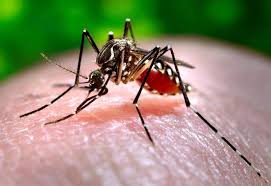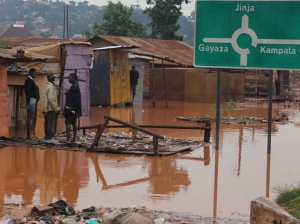Water
Kidney Transplant Survival Up Among Babies
Survival rates for children who get kidney transplants have improved significantly over the last half-century, a new study finds.
“The outlook for infants and children with end-stage kidney disease was once dismal, with poor survival rates after transplant. There has been great progress in pediatric kidney transplantation, and now the patient survival rate is almost 100 percent,” said the study’s principal investigator, Dr. Srinath Chinnakotla.
Chinnakotla is an associate professor of surgery at the University of Minnesota Masonic Children’s Hospital in Minneapolis, where the study was done.
Since 2002, 97 percent of children who had kidney transplants at the hospital were alive a year later. That compares to 85 percent 40 to 50 years ago, the study showed. Read More..
Comment:
This is absolutely good news and light at the end of the tunnel. With this break-through, more children will survive kidney transplant and this is a strong foundation for further improvements in the entire health system. However, as we celebrate this good news, it is equally important to think about thousands if not millions of disadvantaged children who desperately need a kidney transplant but cannot be saved either because of the poor economic nature of their families or lack of such services in major health facilities nearby.
Source: MedlinePlus
Comment by: Cliff Abenaitwe
Cutting Salt a Health Boost for Kidney Patients
Blood pressure and fluid retention improve in those counseled by dietitians, small study shows
Encouraging people with kidney disease to reduce their salt intake may help improve blood pressure and cut excess fluid retention, at least for a while, a new study suggests.
Study participants lowered their systolic blood pressure (the top number)

by almost 11 points, on average, on a salt-restricted diet versus their usual diet. They also flushed out a liter of water (about one-quart) from their bodies, on average, by slashing salt in their diets, researchers said.
Having high blood pressure and retaining excess salt and water in the body stresses the heart and blood vessels, explained lead author Dr. Rajiv Saran of the University of Michigan.
For kidney disease patients, high blood pressure (or “hypertension”) and excess fluid in the body can be a toxic combination. “They die predominantly of cardiovascular disease,” said Saran, a professor of internal medicine and epidemiology in the nephrology division.
Yet doctors rarely have time or make time to counsel each patient about salt-restricted diets, he said.
Saran and co-investigators wondered whether having trained dietitians talk to patients with chronic kidney disease by phone or in person about ways to lower daily sodium intake would make a difference. Read More
SOURCE: medlineplus.gov
New clinical guideline issued for treating low back pain
Low back pain affects millions of people in the United States, and the condition is one of the most common reasons for people missing work.  New guidelines from the American College of Physicians recommend noninvasive ways of treating nonradicular low back pain.
New guidelines from the American College of Physicians recommend noninvasive ways of treating nonradicular low back pain.
The American Chiropractic Association (ACA)

report that approximately 31 million U.S. individuals experience low back pain at one point during their lives. The ACA also note that low back pain is the leading cause of disability across the world, as well as one of the most popular reasons why people miss work.
The condition accounts for a large proportion of all doctor visits in the U.S., and almost 25 percent of the entire adult population in the U.S. has experienced at least one day of low back pain in the past 3 months.
Quote: medicalnewstoday.com
ROTARY BOOST GLOBAL FIGHT AGAINST POLIO
The fight against Polio has been boosted by a new grant from Rotary International- the largest group of committed volunteering men and women committed to serve and change the world.

Rotary has announced $35 million in grants to support the global effort to end polio, bringing the humanitarian service organization’s contribution to $140 million since January 2016.
Nearly half of the funds Rotary announced January 2017 ($16.15 million) will support the emergency response campaigns in Nigeria and the Lake Chad Basin (Chad, northern Cameroon, southern Niger and Central African Republic). Four cases of polio were detected in Nigeria in 2016, which had previously not seen a case since July 2014.
With these cases, funding is needed to support rapid response plans in Nigeria and surrounding countries to stop the outbreak.
While significant strides have been made against the paralyzing disease, with just 35 cases reported in 2016, polio remains a threat in hard-to-reach and underserved areas, and conflict zones. To sustain this progress, and protect all children from polio, experts say $1.5 billion is needed.
In addition to supporting the response in the Lake Chad Basin region, funding has been allocated to support polio eradication efforts in Afghanistan ($7.15 million), Pakistan ($4.2 million), Somalia ($4.64 million), and South Sudan ($2.19 million). A final grant in the amount of $666,845 will support technical assistance in UNICEF’s West and Central Africa Regional Office.
Rotary has contributed more than $1.6 billion, including matching funds from the Bill and Melinda Gates Foundation, and countless volunteer hours since launching its polio immunization program, PolioPlus, in 1985. In 1988, Rotary became a spearheading partner in the Global Polio Eradication Initiative with the World Health Organization (WHO), UNICEF, U.S. Centers for Disease Control and Prevention, and was later joined by the Bill & Melinda Gates Foundation. Since the initiative launched, the incidence of polio has plummeted by more than 99.9 percent, from about 350,000 cases a year to 35 confirmed in 2016, and no cases in 2017 so far.
What is Polio?
According to the World Health Organization (WHO), Poliomyelitis (polio) is a highly infectious viral disease, which mainly affects young children.
The virus is transmitted by person-to-person spread mainly through the faecal-oral route or, less frequently, by a common vehicle (e.g. contaminated water or food) and multiplies in the intestine, from where it can invade the nervous system and can cause paralysis.
Initial symptoms of polio include fever, fatigue, headache, vomiting, stiffness in the neck, and pain in the limbs. In a small proportion of cases, the disease causes paralysis, which is often permanent. There is no cure for polio, it can only be prevented by immunization.
Key Facts about Polio
- Polio (poliomyelitis) mainly affects children under 5 years of age.
- 1 in 200 infections leads to irreversible paralysis. Among those paralysed, 5% to 10% die when their breathing muscles become immobilized.

In a small proportion of cases, the disease causes paralysis, which is often permanent.
- Polio cases have decreased by over 99% since 1988, from an estimated 350 000 cases then, to 74 reported cases in 2015. The reduction is the result of the global effort to eradicate the disease.
- As long as a single child remains infected, children in all countries are at risk of contracting polio. Failure to eradicate polio from these last remaining strongholds could result in as many as 200,000 new cases every year, within 10 years, all over the world.
- In most countries, the global effort has expanded capacities to tackle other infectious diseases by building effective surveillance and immunization systems
About Rotary
Rotary brings together a global network of volunteer leaders dedicated to tackling the world’s most pressing humanitarian challenges. Rotary connects over 1.2 million members of more than 35,000 Rotary clubs in over 200 countries and geographical areas.
Zika outbreak: The mosquito menace
The mosquito, Aedes aegypti,  is causing widespread fear in Brazil where it is spreading the Zika virus that has been linked to thousands of babies being born with birth defects.
is causing widespread fear in Brazil where it is spreading the Zika virus that has been linked to thousands of babies being born with birth defects.
So what do we know about it?
It loves our cities
This is not some jungle-dwelling insect that rarely comes into contact with people.
It is one of those animals, like cockroaches, pigeons and urban foxes, that thrives in built-up areas.
It does not need natural water sources to breed as it can lay eggs in the small and plentiful pools of stagnant water, such as gutters or flower pots, found in cities . Read more
Close But Too Far: The Health Tale of the Batwa in Uganda
Who is talking about this. Leaders, civil society organizations, the media and every body, its time to advocate for a better life for people suffering as a result of historical injustices.
By Cliff Abenaitwe
The 1995 Constitution of Uganda (Third schedule) recognizes 56 indigenous communities that existed in Uganda as at 1st February, 1926. One of these communities is the Batwa tribe- a unique group of indigenous people.
For generations, the Batwa lived in the forests of the Kigezi region (Kabale, Kanungu and Kisoro districts in Western Uganda), Eastern Congo and the forests of North Western Rwanda. Their way of life entirely depended of the forests.
These areas were not only for shelter but were sources of food, medicine as well as worshiping places. In the early 1990’s government gazetted areas where they lived as conservation areas paving way for the creation of EChuya Forest Reserve, Bwindi Impenetrable Forest National Park and Mugahinga National park. This was the turning point for the Batwa for good or for worse depending on the side you are looking at. One aspect to note about…
View original post 3,268 more words
Why Sleeping in Could Make You a Better Worker
If you find yourself hitting the snooze button every morning, don’t blame yourself. Your work schedule could be to blame.
A growing field of research now shows that, for many of us, our work schedules are wildly out of sync with our natural body clocks — and experts are urging employers to take notice.
Sleep is a “strategic resource” that most companies are ignoring, according to a white paper by Christopher Barnes, a management professor at the University of Washington’s Foster School of Business in the US (Read more)
Source: bbc.com

















 Today, we enjoy a good relationship with the Batwa. Many of them operate as tour guides in the national park where they get income, the areas neighboring the park where some Batwa stay benefit from the revenue sharing program. We are working with the Batwa leader and the district leadership to identify their former worshipping and ancestral places so that we preserve these places and also allow Batwa access to these important places.
Today, we enjoy a good relationship with the Batwa. Many of them operate as tour guides in the national park where they get income, the areas neighboring the park where some Batwa stay benefit from the revenue sharing program. We are working with the Batwa leader and the district leadership to identify their former worshipping and ancestral places so that we preserve these places and also allow Batwa access to these important places.